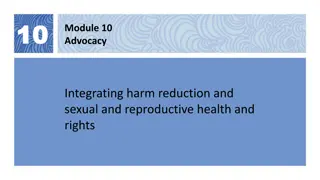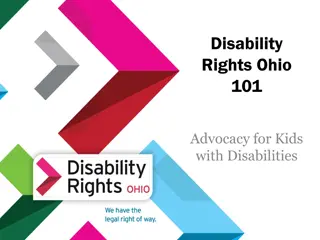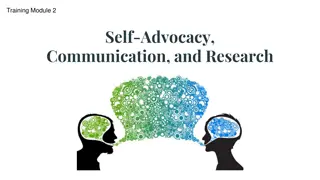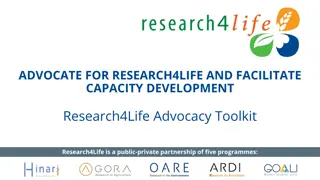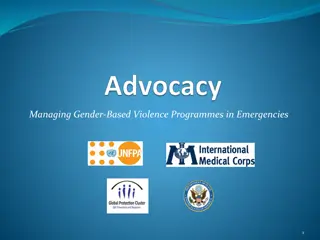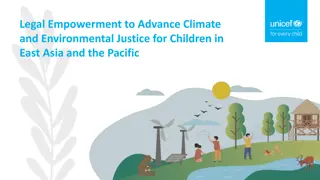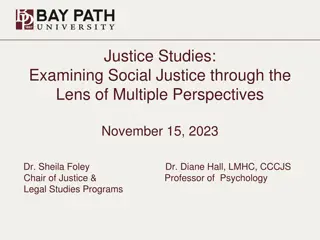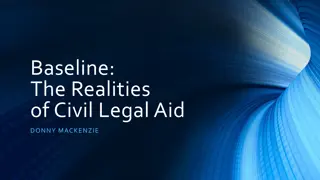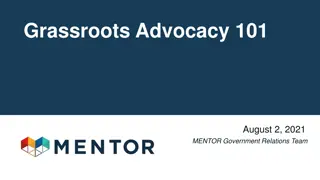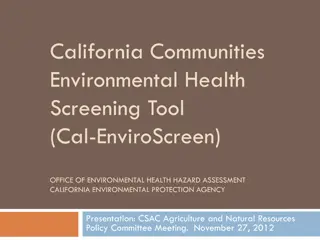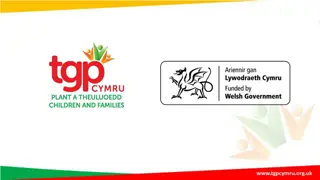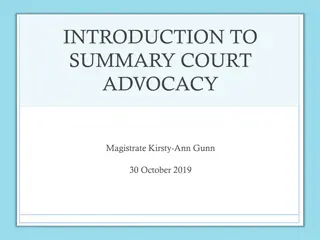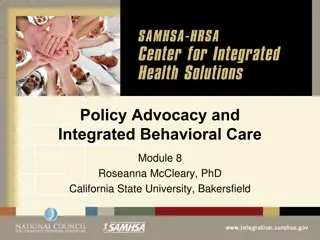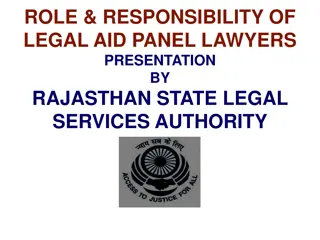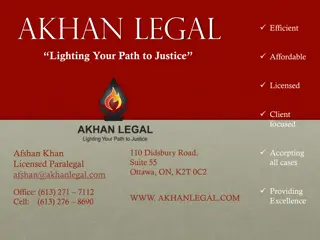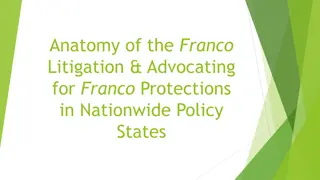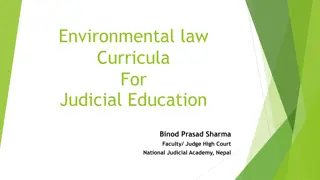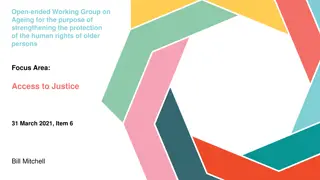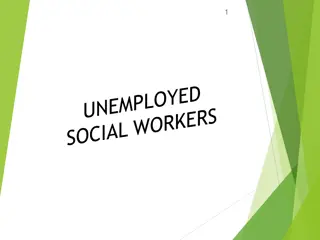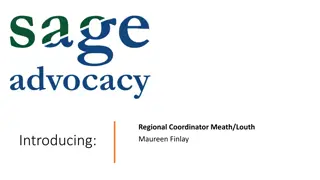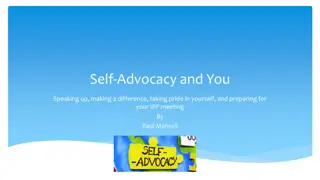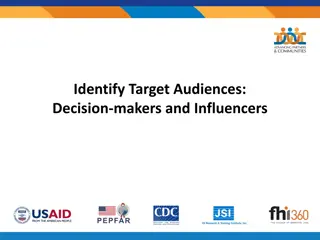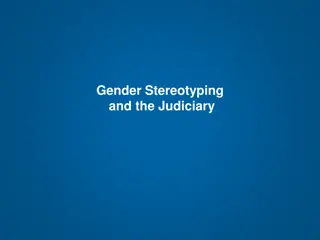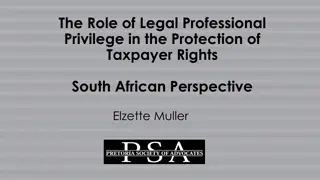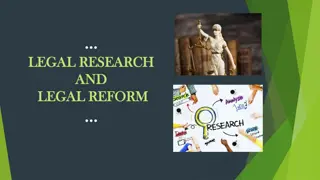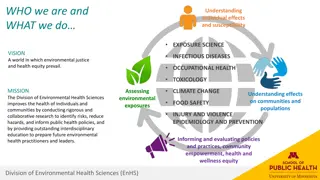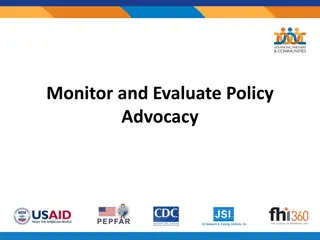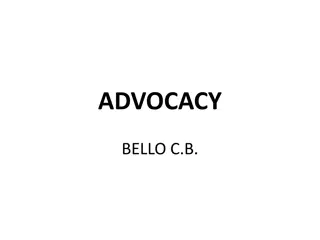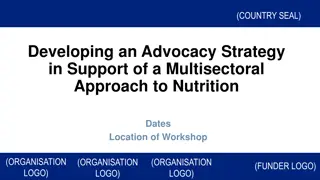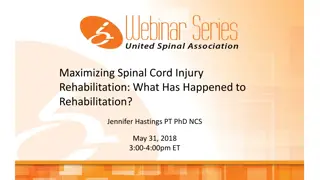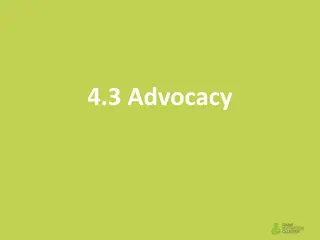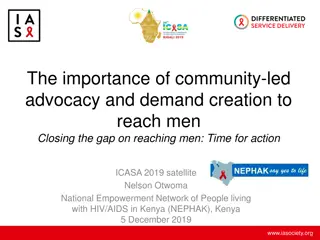Environmental Justice Through Legal Advocacy
Explore the innovative ways rivers are represented in court through legal advocacy by Ewa D. Browska, an environmental lawyer. Learn about the rights of nature, advocacy for clean air, and tools for environmental protection under the Aarhus Convention. Dive into the role of the Aarhus Compliance Committee and the pillars of environmental democracy, access to information, and public participation in decision-making.
Download Presentation

Please find below an Image/Link to download the presentation.
The content on the website is provided AS IS for your information and personal use only. It may not be sold, licensed, or shared on other websites without obtaining consent from the author. Download presentation by click this link. If you encounter any issues during the download, it is possible that the publisher has removed the file from their server.
E N D
Presentation Transcript
How rivers go to court? Ewa D browska Lawyer, Environmental Democracy
Our approach Law drives permanent change Cases with far-reaching impacts We change the system for good 4
How rivers go to court? Fish cannot go to court Advocate General Eleanor Sharpston Environmental human rights Substantial rights: e.g. right to clean air Procedural rights ( access rights ), tools to achieve substantial rights: Access to information Public participation in decision-making Access to justice
Aarhus Convention 46 states belonging to the Economic Commission for Europe of the United Nations (UNECE) The European Union + its Member States Aarhus Regulation Directive 2003/4/EC 2014/52/EU, EIA Directive Directive 92/43/EEC, Habitats Directive Directive 2000/60/EC, Water Framework CJEU case law Quasi-judicial mechanism: the Aarhus Convention Compliance Committee (ACCC) 6
Aarhus Convention 3 pillars Enforce Aarhus Convention 3 pillars: Environmental Democracy Access to environmental information Public Access to Justice Participation Free civil society space
What is environmental information? Any information in written, visual, aural, electronic or any other material form on: (a) The state of elements of the environment, such as air and atmosphere, water, soil, land, landscape and natural sites, biological diversity and its components, including genetically modified organisms, and the interaction among these elements; (b)Factors, such as substances, energy, noise and radiation, and activities or measures, including administrative measures, environmental agreements, policies, legislation, plans and programmes, affecting or likely to affect the elements of the environment within the scope of subparagraph (a) above, and cost-benefit and other economic analyses and assumptions used in environmental decision-making; (c) The state of human health and safety, conditions of human life, cultural sites and built structures, inasmuch as they are or may be affected by the state of the elements of the environment or, through these elements, by the factors, activities or measures referred to in subparagraph (b) above
Access to information Everyone can request information Public authorities obliged to disclose environmental information at request As soon as possible (max. two months) Exhaustive list of exceptions (public security, personal data protection, internal communication) Access to justice: Anyone, whose request has been refused by public authorites or in any other way inadequate handled may challenge it.
Public participation in decision-making (permits) Public concerned anyone affected or likely to be affected by, or having an interest in the environmental decision-making; NGOs promoting environmental protection Decisions concerning activities which have or may have significant effect on the environment (Annex I) Access to justice: Members of the public concerned, having a sufficient interest or, alternatively, maintaining impairment of a right can challenge any decision, act or omission regarding activities which have or may have significant effect on the enviroment.
Public participation Annex I AC: 10. Groundwater abstraction or artificial groundwater recharge schemes where the annual volume of water abstracted or recharged is equivalent to or exceeds 10 million cubic metres 11. (a) Works for the transfer of water resources between river basins where this transfer aims at preventing possible shortages of water and where the amount of water transferred exceeds 100 million cubic metres/year; (b) In all other cases, works for the transfer of water resources between river basins where the multiannual average flow of the basin of abstraction exceeds 2 000 million cubic metres/year and where the amount of water transferred exceeds 5% of this flow. In both cases transfers of piped drinking water are excluded. 13. Dams and other installations designed for the holding back or permanent storage of water, where a new or additional amount of water held back or stored exceeds 10 million cubic metres.
Access to justice in regard to decisions, acts and omissions Members of the public can challenge ALL ACTS AND OMISSIONS by public and private bodies of laws relating to the environment ALL, so also decisions that DO NOT have a significant negative impact on environment
Protect Natur case (C-664/15) - ENGO denied access to proceedings on the extension of a permit for a snow- production facility belonging to a ski resort - Possibility of the deterioration of the status of bodies of water (BUT NOT SIGNIFICANT negative effect on the environment) - Austrian law excludes ENGOs from such a proceedings: they cannot participate, nor challenge the decision - CJEU: ENGO should be able to participate in such proceedings and challenge the decision - Polish water permits ACCC/C/2017/146 Poland - Protect case - access to justice is complementary to public participation rights in environmental decision-making, i.e. where persons have a right to be consulted and contribute to a
Access rights in practice short survey (I) Identified problems in contacts with public authorities: downplaying/acting on paper/issuing replies, no actions/inactivity/refusal Access to information: Public authorities replying late or not replying NOT challenged Public participation: No taking part/lack of information Noone listens NOT challenged access to justice is needed to challenge breaches by public and private bodies of laws relating to the environment (Article 9(3) AC)
Access rights in practice short survey (II) Have you heard about Aarhus Convention and use it as legal base/argument? No/Yes, but never referred to
Anti-SLAPP laws CASE - coalition of non-governmental organisations from across Europe united in recognition of the threat posed to public watchdogs by SLAPPs (Strategic Lawsuits Against Public Participation) Special Rapporteur on environmental defenders under the Aarhus Convention - rapid response mechanism for the protection of environmental defenders: Aarhus-EnvDefenders@un.org EU Anti-SLAPP directive
How rivers go to court Exercise access rights at national level! EU mechanisms: ask for preliminary ruling of CJEU, complaint to the EC Other international mechanisms: ACCC, Special Rappapourt on SLAPP, ECtHR
THANK YOU edabrowska@clientearth.org



